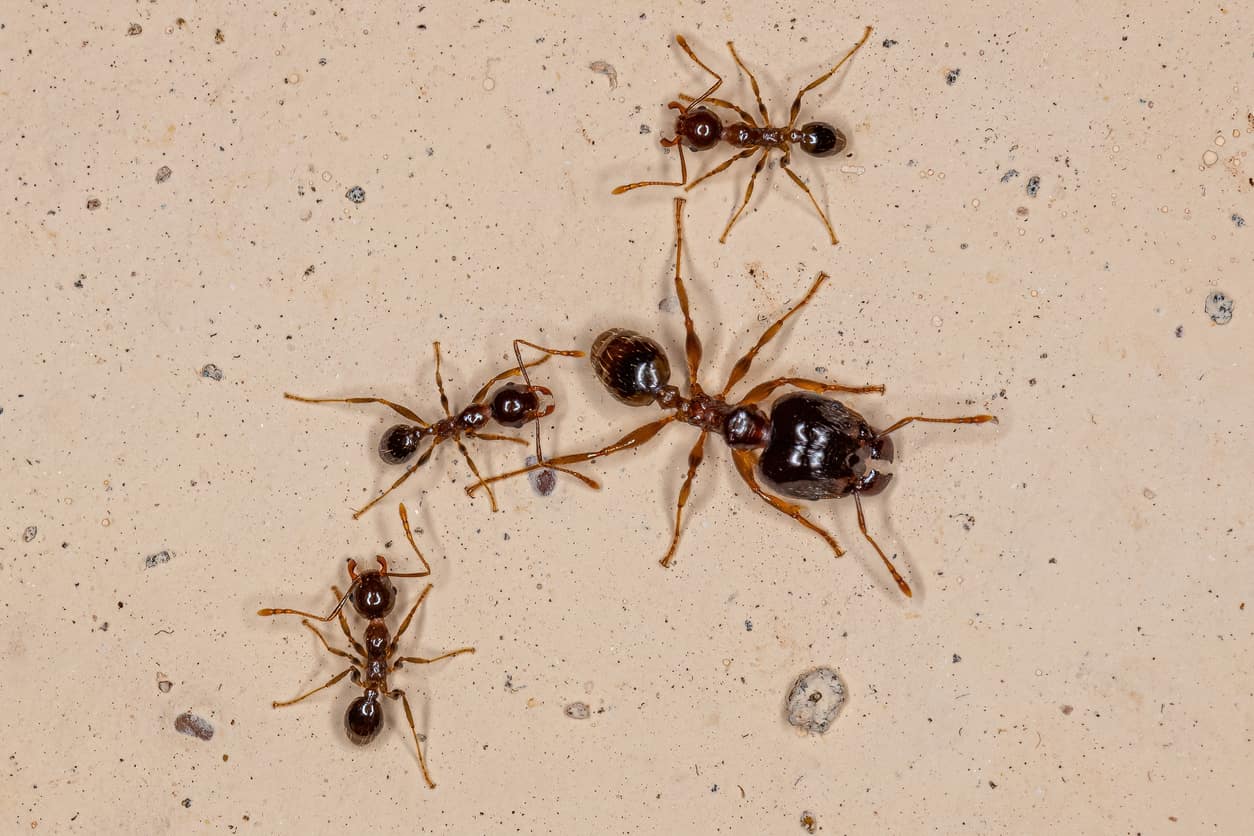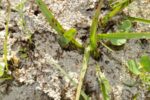
How to Rid Your Home of Big Headed Ants
Big Headed Ants are an invasive species that are common in subtropical climates, like we have here in south Florida. They can be particularly difficult to control due to a single colony having multiple queens, reproducing year round. Often, multiple colonies can completely take over a landscape, across multiple property lines. For these reasons, professional pest control is usually needed.
What Are Big Headed Ants?
Big Headed Ants are soil-nesting ants that have a mixed diet between other small insects, and sweet honeydew found in the landscape. Big Headed Ants have been referred to as one of the most significant invasive species of insect, as they have been found to outcompete and be a potential danger to our native ants. The creature has been problematic in south Florida for quite some time, and it is present in most all tropical and subtropical regions around the globe. Big Headed Ants are named because they are dimorphic, meaning they have both a major and minor worker that are two different sizes. The major worker is equipped with a very large head, much larger than its body, hence, the “Big Headed Ant”.
Big Headed Ants are known for making large nests in the sand throughout the landscape, and excavating soil and bringing it up through cracks in driveways, patios, and pavers on the exterior of homes. Sometimes in severe cases, Big Headed Ant colonies can nest under concrete slabs, and invade your home, similar to termites, and can even excavate soil into the interior of the home through baseboards. Because of this subterranean habitat and their tendency to create piles and foraging tubes made of sand and debris, sometimes Big Headed Ants in house can be misidentified as subterranean termites. Although these ants aren’t associated with directly causing structural damage to a home, they certainly can make a mess on the interior, and damage the aesthetics and functionality of the landscape. Plus, no one likes the idea of having creepy crawlers in the space where their family and guests lounge, sleep and eat.
Big Headed Ants burrow into the soil to create their nests, but usually make their way into your home when they’re on the hunt for food. What’s more, where there is one Big Headed ant nest, there are often several. They are rarely an isolated occurrence, due to the widespread nature of their homemaking. Big Headed Ants are known for building “supercolonies,” a series of smaller colonies that are connected for them to move between freely, carrying food to other colony members. This can make them particularly difficult to control.
Big Headed Ants are most prominent in tropical and subtropical environments, such as found in south Florida. If you notice signs of the bugs in your home, you’ll want to address the problem as soon as possible and take steps to rid your home of these pests.
How to Spot a Big Headed Ant Infestation
Like termites, Big Headed Ants leave a trail behind them when they’re on the move. Although not directly compromising the structural integrity of your home, if not resolved, they can become an enormous inconvenience and eyesore, and completely take over a landscape. In severe cases, Big Headed Ants in house can even forage up walls and invade attics.
Often, foraging trails or tubes can be found on the sides of trees, or on the exterior of your home. These trails are typically near the Big Headed Ant’s nesting site, which are most commonly found in sand or soil patches in the landscape, in a somewhat conical shape. Nests can also be found in lawns, under concrete slabs, flowerbeds, etc. Because of this, Big Headed Ants can sometimes be misidentified for the Red Imported Fire Ant. However, the nests or dirt piles of Big Headed Ants are commonly found between sidewalks and pavers. Another way to determine the difference between Fire Ants and Big Headed Ants is that Fire Ants will not have the Dimorphic appearance. Instead, Fire Ants are Polymorphic, meaning, “having many sizes”, and of course, will aggressively sting, whereas Big Headed Ants will not.
If a Big Headed Ant nest is nearby, you may have “workers” or “crawling ants” foraging into your home through cracks and crevices to feed on food remnants of meat, grease, liver, molasses, peanut butter, pet food, fruit and fruit juices, etc. Thus, kitchens and storage cabinets are prime spots for these reddish-brown ants to appear. These ants will be small, with bent antenna, and a pinched “waist”. Big Headed Ants can also sometimes nest in an interior wall void. In this case, you may find hundreds of the “swarmers” or “reproductives” of Big Headed Ants flying inside.
Big Headed Ants Treatment
Because Big Headed Ants forage into homes through cracks and crevices looking for food, there are some helpful tips and tricks to preventing infestations. Preventing an infestation should be the first line of big headed ants treatment.
Preventing and Controlling
This may seem like a no-brainer, but it’s crucial to ensure that all of your food products and pet food is sealed well to prevent the ants from seeking it out in the first place. Air-tight containers work great for this, as they act as a seal against scent and prevent entry for the Big Headed Ants in house. Additionally, if there’s a spill or left-over cooking residue, clean it up as soon as possible to make sure the ants don’t have a food source. If you find ants foraging into your home through a crack in the baseboard or window, creating a physical barrier with caulk or screening can help keep the bugs outside.
However, because of the invasive nature of these ants, and their ability to make “super colonies”, these suggestions are often not enough. Consultation and treatment from a professional pest control company is typically required for Big Headed Ants treatment.
If you have a Big Headed Ant Florida infestation that just won’t seem to go away, or they keep coming back and you don’t know why, contact Hulett Environmental Services today.
How To Get Rid of Big Headed Ants
Hulett Environmental Services offers free pest control inspections, with no obligation, and will outline a program to control or prevent Big Headed Ants and of course provide you with Big Headed Ants treatment if necessary. We will maintain your home bug-free, and you can maintain your peace of mind.
So you are ready to get rid of Big Headed Ants form your home, get in touch with the Pest Control experts at Hulett Environmental Services.



